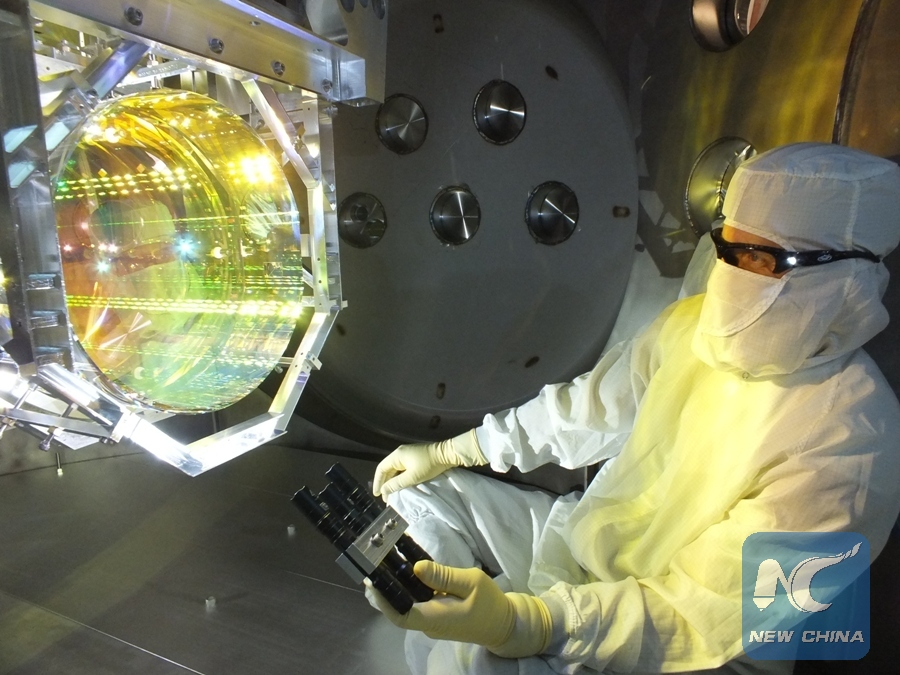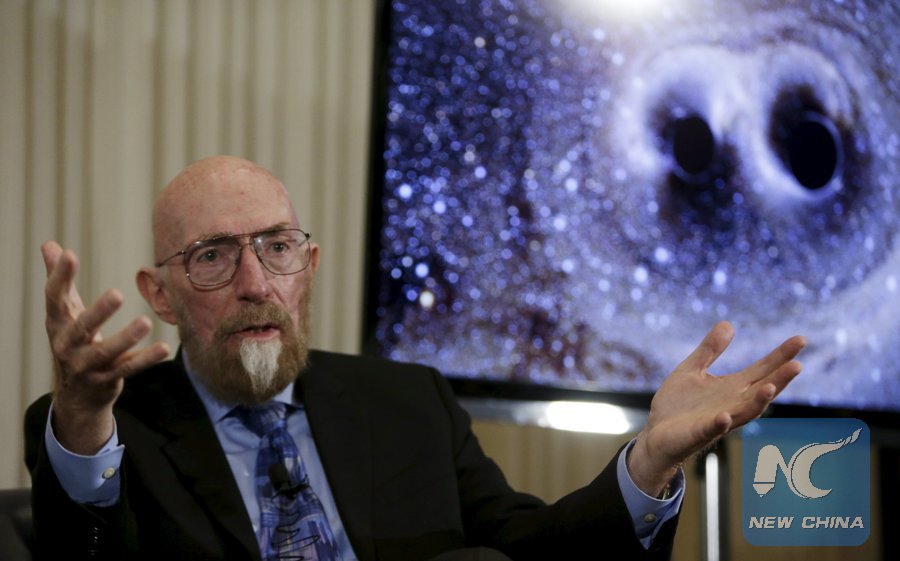
File photo shows a technician inspects one of LIGO's core optics (mirrors) by illuminating its surface with light at a glancing angles, prior to sealing up the chamber and pumping the vacuum system down. U.S. scientists said on February 11, 2016 that they have detected the existence of gravitational waves, which were predicted by Albert Einstein's theory of general relativity 100 years ago. (Xinhua/Matt Heintze/Caltech/MIT/LIGO Lab)
WASHINGTON, Dec. 22 (Xinhua) -- The top scientific breakthrough of 2016 was the discovery of tiny ripples in spacetime called gravitational waves, the highly-respected U.S. journal Science announced Thursday.
"When the reporters and editors gathered to discuss big news in science, we didn't take long to pick a Breakthrough of the Year," Tim Appenzeller, news editor of the Science journal, said in a statement.
"2016 saw lots of fantastic achievements. But the discovery of gravitational waves towered over everything else."
Gravitational waves were first proposed by Albert Einstein's theory of general relativity 100 years ago, but it wasn't until February of this year that scientists with the Laser Interferometer Gravitational-Wave Observatory (LIGO) announced that they had detected its existence for the first time.

Dr. Kip Thorne of Caltech makes his closing remarks during a news conference to discuss the detection of gravitational waves, ripples in space and time hypothesized by physicist Albert Einstein a century ago, in Washington February 11, 2016. (Xihua/REUTERS)
The first gravitational wave signal detected by the LIGO team on Sept. 14, 2015 came from the collision of two monstrous black holes 1.3 billion light years away.
"The triumph was hard earned," Science staff writer Adrian Cho wrote in an accompanying editorial. "Einstein himself vacillated for decades over whether gravitational waves should exist. Even if they did, the only source Einstein could imagine, two orbiting stars, would produce waves too feeble to detect."
Now, with the discovery that "shook the scientific world," "physicists are eagerly anticipating what may come next, as gravitational waves promise an entirely novel way to peer into the cosmos," Cho said.
The nine other major scientific achievements of 2016 selected by Science included:
-- The discovery of an Earth-sized planet orbiting Proxima Centauri, the closest star outside our solar system.
-- The victory of a computer program called AlphaGo over the world's No. 2 Go player in a five-game match.
-- Research that eliminating old cells could make mice less prone to some diseases of aging and even extend their lives by 20 percent.
-- An experiment that showed great apes have a mind-reading skill that only humans were thought to fully possess.
-- The creation of a suite of designer proteins never before seen in nature, setting the stage for novel medicines and materials.
-- The production by Japanese researchers of mouse pups from egg cells grown entirely in a lab dish.
-- Genome research that most living people outside Africa descend from one great single wave of migration.
-- The development by a U.K.-based company, Oxford Nanopore Technologies, of pocket-sized DNA sequencers that enables scientists to do quick on-the-spot sequencing of microbes, even in space.
-- The creation of world's first metamaterial lens, or metalens, that are cheap to produce, thinner than a sheet of paper, and far lighter than glass, an advance hailed as having the potential to revolutionize everything from microscopes to virtual reality displays to cameras, including the ones in your smartphone.

